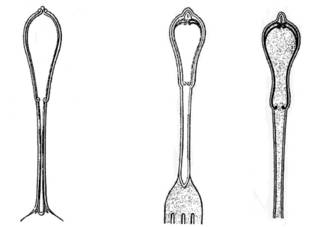Recommended Reading: Design Patents and “The Death of Gorham Co. v. White”
Donning my design patent hat for the moment, I recommend to patent and trademark lawyers alike, the recent article entitled “The Death of Gorham Co. v. White: Killing It Softly with Markman,” 86 Journal of the Patent and Trademark Office Society 792 (October 2004).

Authors Perry J. Saidman and Allison Singh lament the current demise of the Supreme Court’s “ordinary observer” test for design patent infringement laid out two centuries ago in Gorham Co. v. White, 81 U.S. (14 Wall.) 511 (1871):
"We hold therefore, that if, in the eye of the ordinary observer, giving such attention as a purchaser usually gives, two designs are substantially the same, if the resemblance is such as to deceive such an ordinary observer, inducing him to purchase one supposing it to be the other, the first one patented is infringed by the other." 81 U.S. at 528.The Gorham test affords a design patent some scope of coverage beyond the precise design depicted in the patent. In Gorham, the Court found infringement of the patented Gorham design shown here on the left, by the two White designs shown on the right.

Thus courts must now verbalize the invention in a design patent, and then compare that verbalization with a description of the accused design. The authors assert that this has resulted in a disregard for Gorham’s ordinary observer approach and a narrowing of protection for design patents. Once the patented design is reduced to words, differences from the accused design become magnified. As an example, the authors cite OddzOn Prods., Inc. v. Just Toys, Inc., 43 USPQ2d 1641 (Fed Cir. 1997), in which the design on the right was found not to infringe the patented design on the left.

According to Saidman and Singh, application of the Markman requirement to design patents was a fundamental error that has “mortally wounded” the Gorham test. They urge that “it is time to acknowledge that a design patent is fundamentally different from a utility patent, and finally relieve design patent owners and courts from the stranglehold of Markman."




0 Comments:
Post a Comment
<< Home